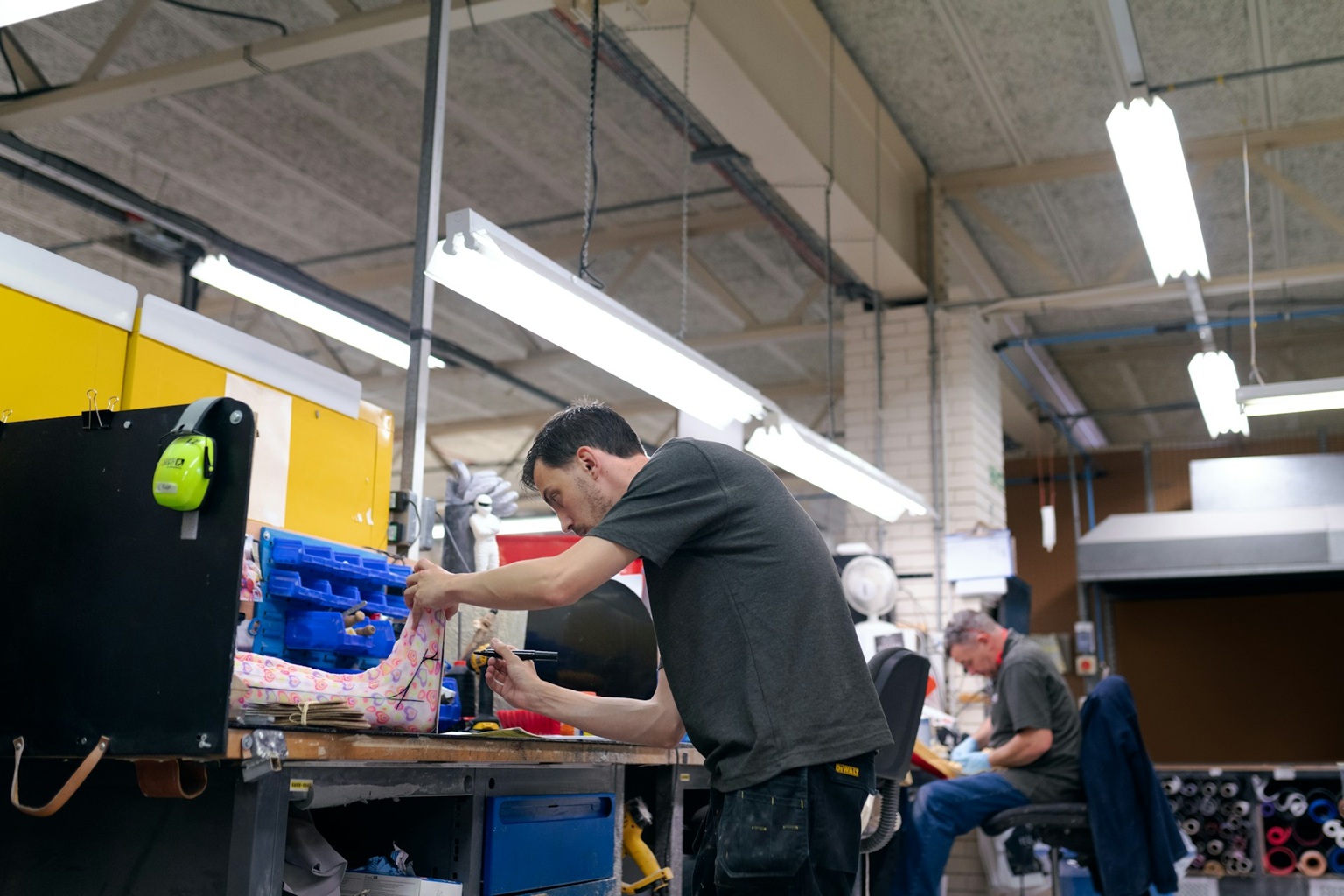
Is Poor Ventilation Compromising Your Facility’s Safety?
July 31, 2024 - Emily Newton
Revolutionized is reader-supported. When you buy through links on our site, we may earn an affiliate commission. Learn more here.
Tenured manufacturers have acclimated to poor industrial air quality. But, it could jeopardize the staff’s safety. Low-quality air is more than pollutants floating into lungs — it also includes accumulation and corrosion on machinery leading to incidents. How can manufacturing management tell when ventilation and air quality are starting to dismantle operations, one particle at a time?
Noticing Poor Industrial Air Quality
These telltale signs are the most consistent ways to identify when air improvements are necessary.
Visual Cues
It is a challenge to identify the visual indicators with the hustle and bustle of industry. No matter how many sparks fly off a sheet of metal, they cannot fully obscure clear details. All staff are responsible for taking moments of their day to pause and question the amount of dust and large particulate matter in their view. How much accumulates on personal protective equipment, like glasses and visors?
Other visual cues include vapors. Smoke, chemical fumes and other odors often have discoloration anyone can notice if they make it a priority.
Employee Health Effects
Manufacturing professionals should be able to pinpoint respiratory issues, especially for staff nearby polluting machines. Welders, machinists, chemists and more expose their skin, lungs and hearts to harmful air daily. How often do they cough, have sore throats or seem short of breath? This is not a sign of being overworked — there is something in the air.
If staff show signs of fatigue, fainting or headaches, this is another poignant sign of poor ventilation in the workplace. It means filters are not capturing enough to keep people safe.
Monitoring Equipment and Sensors
Industry 4.0 introduced automation and the Internet of Things (IoT) into manufacturing because of how much it could serve productivity and the sector’s people.
Industrial air quality monitors recognize contaminants like volatile organic compounds (VOCs), carbon monoxide and particulate matter (PM). What about metal or wood shavings from in-progress operations? Sensors are critical for noting what is the most abundant air quality hindrance.
Regulatory Audits
Frameworks and legislation like the Pollution Prevent Act, Clean Air Act and others guide manufacturers in finding the best ways to curb air pollutants. Third-party auditors will periodically review the facility’s precautionary measures and equipment health.
They may also provide recommendations for improvements, such as deploying more scrubbers and enhanced filters for advanced pollutant capture. Safety data sheets are also available to spot specific paint points for air quality issues.
Impacting Operations and the Workforce
Comprehending the long-term mark meager air particles make in massive facilities is a challenge worth undertaking. Why? Ignoring the air will cause the entire facility to crumble from within, starting with its staff.
Reduced Productivity
Workers in distress will not do their jobs to their highest potential. Concentration dips and commitment to the company runs out. This impacts production with reduced output, but it also leads to increased absenteeism. Nobody wants to come to work when every breath causes discomfort.
Lower Mental Health
This undue stress takes its toll on industry workers. Nobody should feel anxious or defenseless at work. If employers do not care about the quality of the air the workers breathe, then they know C-suite individuals do not care about them. Workplace culture fades along with morale, as mental stressors become a daily concern.
Equipment Malfunctions and Injuries
Built-up corrosion and clogged air filters in business-critical equipment will inevitably fail. If something snaps, safety protocols could fail and hurt technicians. This is also an alert to upper management that maintenance schedules may not be thorough or frequent enough to check for concerns related to air quality reviews or contaminant buildup.
Additionally, strained, cognitively impaired staff are more likely to operate machines incorrectly or irresponsibly if they are under too much stress. Avoid the workers’ compensation claims by clearing the air first.
Quality Control Issues
Defective, inconsistent products are a problem for the company’s stability, and air quality may lead to expedited rusting or less precise cuts. It may not be immediately visible, but the air could lead to jagged and otherwise unsafe to handle output, leading to more safety problems.
Additionally, it continues to compromise environmental safety by encouraging increased waste generation.
Health Compliance Risks
If manufacturers are spending all their revenue on paying fines for not following health and safety regulations, then they cannot invest that money into enhancing conditions for workers. Low-quality ventilation leads to more frequent audits and inspections, adding more pressure on workers and management to set time and money aside for them.
Long-Term and Chronic Conditions
Acute symptoms like nausea and eye irritation are worthy of concern. However, a facility wholly dismantles itself by letting staff adopt lifelong health conditions because of air quality neglect. This could include:
- Asthma
- Lung disease
- Cardiovascular disease
- Cancer
- Stroke
- Pulmonary disease
- Pneumonia
Improving Conditions
With risks so monumental, organizations must take steps now to circumvent contaminated air. The betterment of employees and equipment depends on it. How can facilities get started?
Start with an IAQ assessment. Detect carbon dioxide, PM of all sizes, VOCs and more. Leverage top tools like anemometers and thermal imaging, alongside the IoT sensors, to discover how other environmental metrics like airflow, humidity and temperature impact air quality.
Once companies discover their oversights, install infrastructure that directly combats the most prominent detractors. Advanced HVACs and local exhaust ventilation systems have functionality like variable air volume, fume hoods, source capture arms and more to capture more pollutants than ever before. Installing top-of-the-line HEPA filters and UV peripherals is also necessary. Reference OEM recommendations and compare this with regulatory standards to outline a rigorous maintenance schedule.
Employee training is critical for maintaining air quality day to day. What practices do facilities incorporate to control air quality in addition to HVAC systems and filters? In the automotive sector, manufacturers can design vehicles with air quality in mind. For example, perforated metal sheets enhance a car’s durability while making air intake and ventilation more effective. This prevents pollutants from entering freshly made cars and shows clients the facility cars about industrial air quality.
Finally, here are several other enhancements corporations should consider when clearing the air in their buildings:
- Consult with experts, such as hygienists or sustainability professionals
- Enable continuous air monitoring with building management systems and data loggers
- Have dedicated staff for reviewing and implementing updates from OSHA, the EPA and NIOSH
- Focus on sustainable business practices using more eco-friendly materials, such as adhesives and paints, to reduce air contamination potential
- Reinforce chemical storage to prevent fume leakage
- Deploy economizers to make HVACs smarter and less reliant on recirculating air
Witnessing Better Ventilation in Action
Over the years, manufacturing corporations have taken heed from regulatory bodies and negative press to tackle the air quality problem. These case studies prove the financial and time investment was worth it.
Company, 3M, was producing lots of VOCs, and it was harming over 55,000 employees. As part of a lean manufacturing strategy, it tackled the problem with astonishing results, even back in 2005. Using Lean Sigma Six to streamline and make their operations more sustainable, they reduced VOCs by 61% and Toxic Release Inventory releases by 64%. The project also included retraining all workers to help them understand the practical and environmental benefits of the culture transition.
Another study of furniture makers in Vietnam sought to identify the most influential parameters in poor quality. The company became aware that health impacts were harming staff and control. The wood drilling, sawing, cutting, and sanding workplace was the most egregious outlier, with fabric cutting, rubber sewing, and leather covering the second-most problematic area. Even though other regions of the facility met standards, doing the assessment allows the maker to target these microclimates to help those in harm’s way.
The stories outline practical, accessible frameworks for other manufacturing agencies to execute similar plans to enhance ventilation and improve health and safety conditions.
A Breath of Fresh Industrial Air Quality
Manufacturing leaders must invest in improved air quality for the preservation of their staff and machinery. Better ventilation should be foundational, as it leads to better quality of life and enhanced sustainability. Without it, the safety of the staff, business and the planet is at risk.
Revolutionized is reader-supported. When you buy through links on our site, we may earn an affiliate commission. Learn more here.
Author
Emily Newton
Emily Newton is a technology and industrial journalist and the Editor in Chief of Revolutionized. She manages the sites publishing schedule, SEO optimization and content strategy. Emily enjoys writing and researching articles about how technology is changing every industry. When she isn't working, Emily enjoys playing video games or curling up with a good book.






